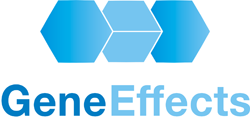I recently returned, albeit part-time, to work in academia and I was offered the chance to teach. Many academics in scientific research never teach, other than perhaps one-to-one “teaching” of a new doctoral student. In the past, I have presented my work to other scientists and also given a few guest lectures to undergraduates; but [...]
Author Archives: Paul Denny
Five Reasons Why Academic Science Researchers Should Teach
Applications & Bottlenecks In Next Generation Sequencing, Day 2
This word cloud shows the words that people used in the ice-breaking session, that I mentioned in my last post, to describe what they hoped to gain from the conference. On Day 2, our Keynote speaker was: Dr Anneke Seller, Oxford Genetics: Clinical utility; actionable #NGS diagnosis for patients & families http://t.co/0mmrSx1Dd5 #ngsmanchester — Paul [...]
Applications & Bottlenecks In Next Generation Sequencing
After months of preparation and the occasional sleepless night, November 5th arrived. It wasn’t only Bonfire Night, but also the beginning of a two-day conference, focusing on NGS in clinical genetics laboratories. Organised by my colleagues and friends from biotexcel and myself, it was held in the Manchester Conference Centre, in, naturally enough, Manchester, UK. In order to break [...]
So, What Do Your Genes DO?
Genes are not passive. They are the target of molecular “dimmer switches”; typically (but not always) specific proteins, which dial up or turn down their activity. Most genes are translated into proteins, but discovering the true role of those proteins, in the life of a cell or a whole organism, is still one of the great challenges [...]
Some of our genes are missing…but which ones?
One can think of genes in a number of ways: At the level of the DNA – simply as a linear sequence of nucleotides, in ONE fixed order, in the “normal” state, or Again as a DNA molecule, but remember that genes in organisms, rather than in pieces of DNA in a test-tube, are subject [...]
Genetics Society Spring Meeting: Genomics for Health and Society
The aim of of the meeting was to begin to answer the question: “What will be the impact of large-scale sequencing of human populations in the 21st Century?” Held at The Royal Society in London on 19th April 2013, the meeting brought together some distinguished figures from clinical genetics, population genomics, DNA fingerprinting and the [...]
Gene & Cell Therapy For the People
The Annual meeting of the British Society for Gene and Cell Therapy, as well as being aimed at the expert, included a day of presentations intended for students and the public. Aimed primarily at GCSE and A-level students, but open to all, this one day interactive event provided an opportunity to discuss and debate gene and [...]
Moving Next-Generation Sequencing into the Clinic, part 2
first attempt at live tweets from #ngs2013 http://t.co/SbWrGx8weI — Paul Denny (@pauldennyuk) March 12, 2013 In my last post, I summarised the first four talks from this symposium: 1st Oxford Workshop and Symposium, 4th Techgene Knowledge Network Meeting, “NGS2013 Next generation Sequencing: Bioinformatics and Data Analysis” You could also read the Tweets from the meeting [...]
Moving Next-Generation Sequencing into the Clinic
On a glorious day (but with Arctic-like winds!) earlier this week, I attended a symposium on exploiting NGS in the diagnostic genetics clinic: Off to # Ngs2013 today at Wolfson College Oxford http://t.co/SbWrGx8weI #NGS #Clinical #Dx #diagnostic #personalisedmed Should be good — Paul Denny (@pauldennyuk) March 12, 2013 The speakers were clinicians, bioinformaticians and biomedical [...]
What might a small mouse teach us about human congenital abnormalities?
Mice are born with their eyes tightly shut, opening them for the first time only a few days later. So when a mouse was noticed that was smaller than normal and had been born with it’s eyes open, it drew attention. Abnormalities like this arise spontaneously in all animal facilities, but sometimes they are not [...]
